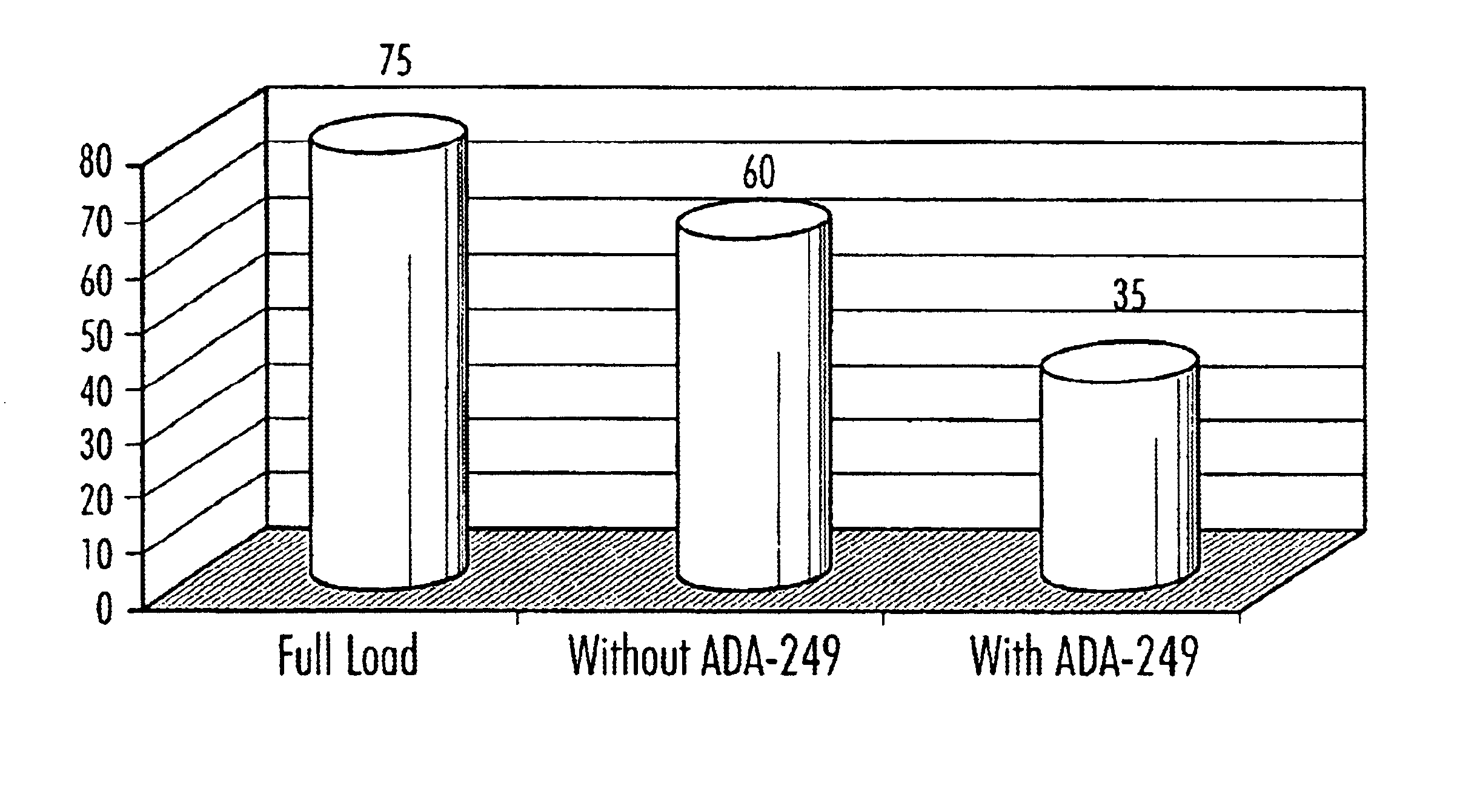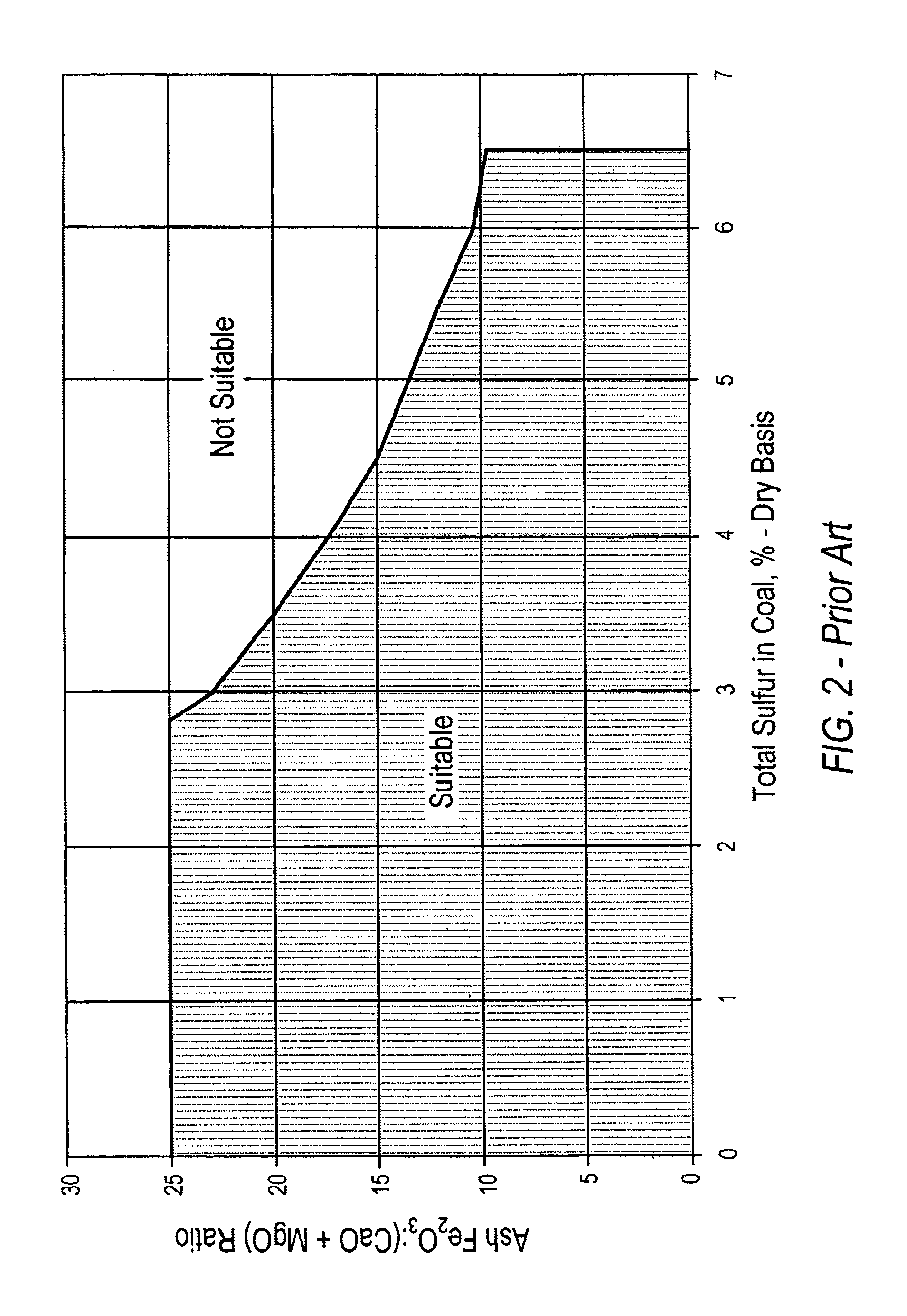Low sulfur coal additive for improved furnace operation
- Summary
- Abstract
- Description
- Claims
- Application Information
AI Technical Summary
Benefits of technology
Problems solved by technology
Method used
Image
Examples
Embodiment Construction
[0035]The Additive
[0036]As noted, the additive contains iron and preferably a mineralizing agent, such as zinc. The iron and mineralizing agent can be in any form, such as an oxide or sulfide, so long as the iron and mineralizing agent will be reactive under the operating conditions of the furnace. Preferably, the additive includes at least about 50 wt. % (dry basis) iron and more preferably at least about 80 wt. % (dry basis) iron and even more preferably from about 70 to about 90 wt. % (dry basis) iron. Preferably, the ratio of ferric (or higher valence) iron to ferrous (or lower valence) iron is less than 2:1 and even more preferably ranges from about 0.1:1 to about 1.9:1, or more preferably at least about 33.5% and even more preferably at least about 35% and even more preferably at least about 40% of the iron in the additive is in the form of ferrous (or lower valence ) iron and no more than about 65% of the iron in the additive is in the form of ferric (or higher valence) iron....
PUM
 Login to View More
Login to View More Abstract
Description
Claims
Application Information
 Login to View More
Login to View More - R&D
- Intellectual Property
- Life Sciences
- Materials
- Tech Scout
- Unparalleled Data Quality
- Higher Quality Content
- 60% Fewer Hallucinations
Browse by: Latest US Patents, China's latest patents, Technical Efficacy Thesaurus, Application Domain, Technology Topic, Popular Technical Reports.
© 2025 PatSnap. All rights reserved.Legal|Privacy policy|Modern Slavery Act Transparency Statement|Sitemap|About US| Contact US: help@patsnap.com



